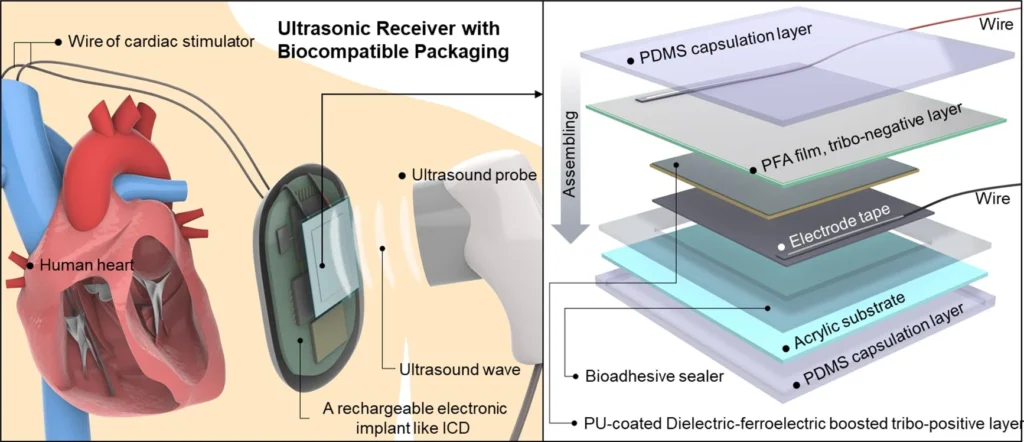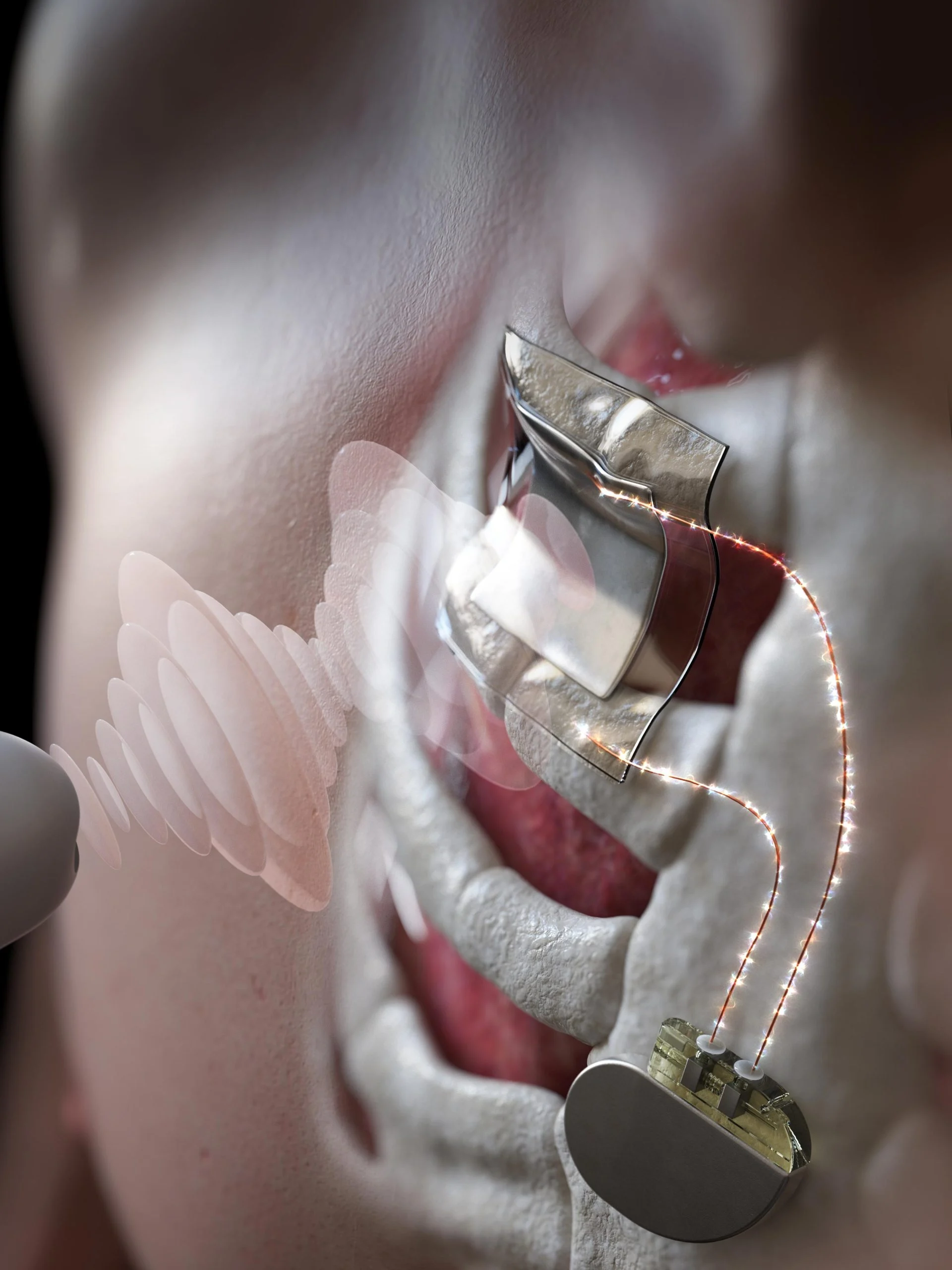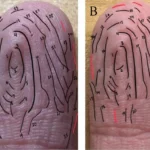A schematic of an ultrasonic receiver that demonstrates how it can be bent and deformed during the process of wirelessly charging the battery of a body-inserted medical device, while maintaining its performance during close attachment to the human body. Credit: Korea Institute of Science and Technology(KIST)
A New Era of Wireless Charging
Imagine recharging a device deep underwater or within the human body—without wires or invasive procedures. Thanks to pioneering research from the Korea Institute of Science and Technology (KIST) and Korea University, this vision is becoming a reality. Their innovative ultrasonic charging technology promises to revolutionize how we power devices in challenging environments.
The Challenge with Conventional Methods
Traditional wireless charging relies on electromagnetic (EM) waves, effective for gadgets like smartphones but limited in certain scenarios. EM waves struggle to penetrate water and metal, making them unsuitable for underwater sensors or medical implants. Additionally, EM-based charging can generate heat, posing risks to biological tissues.

(Left) Proposed application of a triboelectric ultrasonic receiver in an implantable medical device.
(Right) A comprehensive block diagram of the device. Credit: Korea Institute of Science and Technology (KIST)
Harnessing the Power of Sound
Ultrasonic waves, commonly used in medical imaging and sonar, offer a safer and more efficient alternative. These high-frequency sound waves can travel through water and human tissue without causing harm. The KIST team developed a biocompatible ultrasonic receiver that converts these waves into electrical energy, enabling wireless charging in environments previously deemed inaccessible.
Boosting Efficiency with Triboelectric Generators
To enhance energy conversion, researchers integrated a triboelectric generator into the system. This component transforms mechanical vibrations from ultrasonic waves into electricity. By adding a ferroelectric material, they significantly improved energy transfer efficiency from less than 1% to over 4% .
Real-World Applications
This technology has profound implications:
- Medical Implants: Devices like pacemakers could be recharged without surgery, reducing patient risk and healthcare costs.
- Underwater Sensors: Monitoring equipment for oceanic research or infrastructure can operate longer without manual battery replacements.
- Industrial Equipment: Machinery in hard-to-reach or hazardous areas could receive power wirelessly, enhancing safety and efficiency.
- Reference: “A Body Conformal Ultrasound Receiver for Efficient and Stable Wireless Power Transfer in Deep Percutaneous Charging” by Iman M. Imani, Hyun Soo Kim, Minhyuk Lee, Seung-Bum Kim, So-Min Song, Dong-Gyu Lee, Joon-Ha Hwang, Jeyeon Lee, In-Yong Suh, Sang-Woo Kim, Jun Chen, Heemin Kang, Donghee Son, Jeong Min Baik, Sunghoon Hur and Hyun-Cheol Song, 26 March 2025, Advanced Materials.
DOI: 10.1002/adma.202419264
Looking Ahead
While still in the experimental phase, this ultrasonic charging method holds promise for widespread adoption. As researchers refine the technology, we may soon see a world where devices are powered seamlessly through sound, regardless of their environment. Dailyscitech










